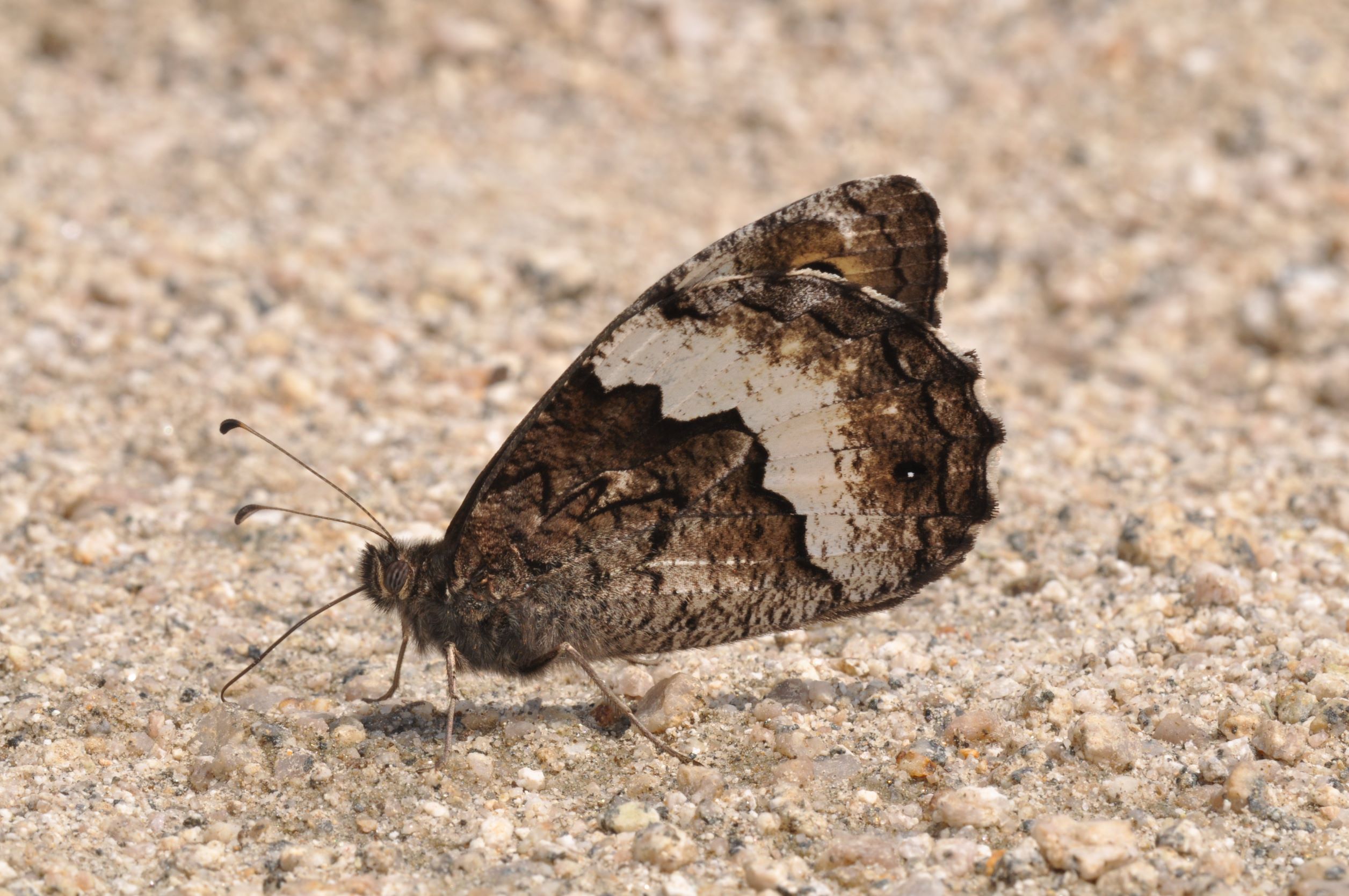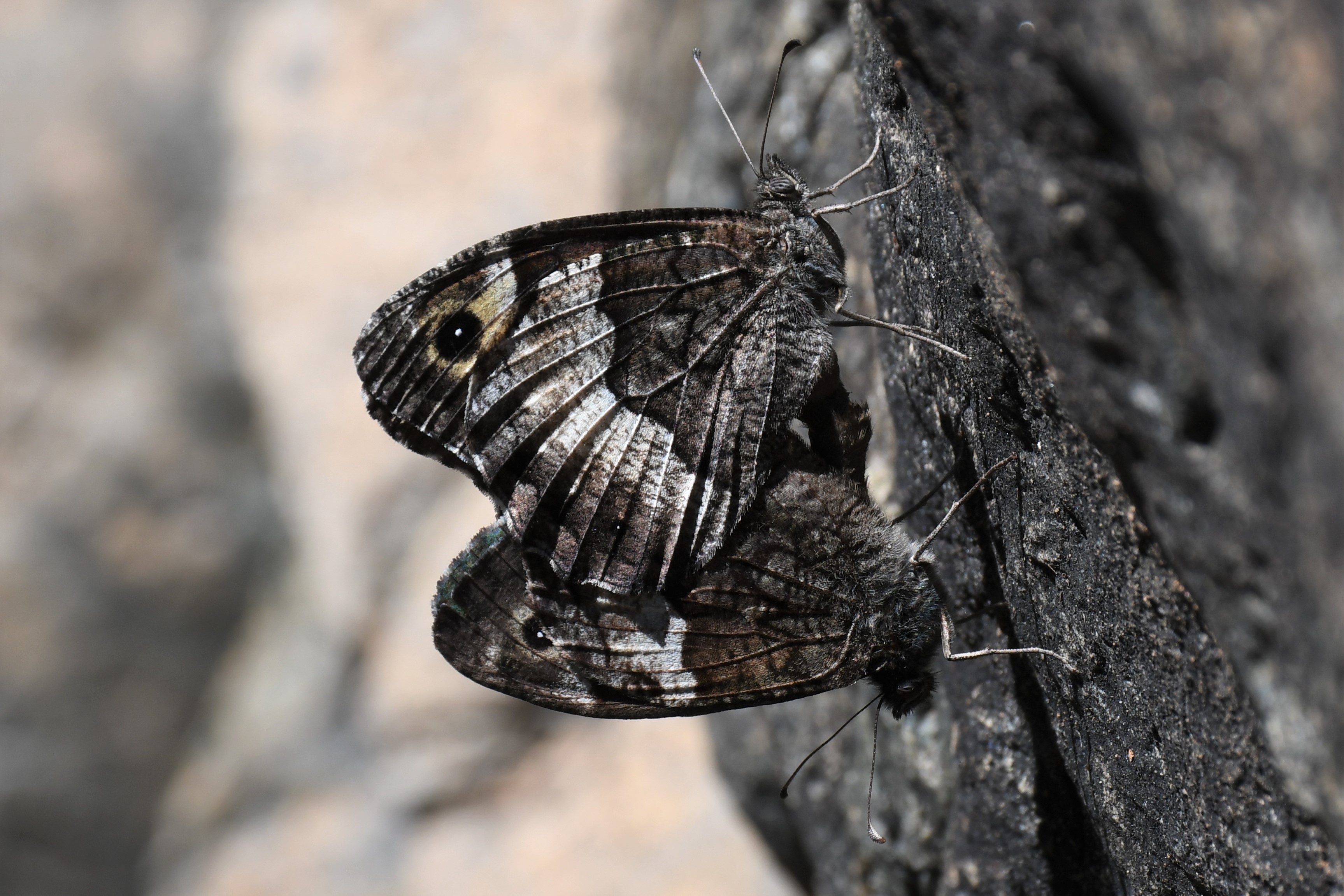|
Hipparchia fagi / Woodland Grayling
Pylltarja
Nymphalidae - Satyrinae
Hipparchia fagi (Scopoli, 1763). TL: Krain, Slovenia.
 
0
 

1a. Hipparchia fagi, distribution map (09.i.2025).  Historical data ; Historical data ;  Additional data from the 2018 update ; Additional data from the 2018 update ;  New observations since the 2018 update. New observations since the 2018 update.
1b. Hipparchia fagi ♂ underside. Bulgaria (© Sylvain Cuvelier)
1c. Unsuccessful courship of Hipparchia fagi, 16.ix.2024, Tropojë, Albania (© Lulëzim Shuka)
1d. Hipparchia fagi ♂ upperside. Greece (© Sylvain Cuvelier)
1e. Hipparchia fagi ♂ upperside. Greece (© Sylvain Cuvelier)
1f. Hipparchia fagi copula.
Description
♂♂
Large butterfly. Fw: 33-38 mm.
Fw: apex not pointed.
Ups: dark brownish-grey gc.
Upf: sex-brand, pale cream-white postdiscal band, variable fuscous suffusion enclosing variable ocelli in s5 and s2 (sometimes absent)
Uph: large white postdiscal band, often small ocellus in s2, outer edge basal area nearly straight or gently curved.
Unf: yellowish or white are in apical area of postdiscal band.
Unh: brownish-grey gc with dark striae, black discal and submaringal lines, well pronounced wide white postdiscal band, small ocellus.
♀♀
Larger.
Ups: better defined and paler postdiscal bands, often pale yellowish in apical area.
Similar species
Hipparchia syriaca
Identification based on external morphology is unreliable.
Upf: slightly more pointed apex.
Unh: less pronounced, marbled greyish-brown white postdiscal band.
Identification based on ♂♂ genitalia (Jullien organ: 6-10 small rods) is strongly recommended, ♀♀ genitalia distinctive, needing full dissection (url)
Life cycle
Adults: single generation from June to August, with aestivation period.
Egg: short stage.
Caterpillar: overwintering.
Pupa: short stage.
Habitat
Hipparchia fagi inhabits grassy places in open shrubland, forest and forest edges, often resting on tree trunks, from 400 up to 1500 m a.s.l.
Spatial requirement moderate, population density sometimes high.
Foodplants
Caterpillars feed on Brachypodium phoenicoides, B. pinnatum, B. retusum, Bromus erectus, Dactyllis glomerulata, Festuna ovina, F. rubra, Holcus lanatus, H. mollis and Poa pratensis.
Butterflies feed on higher flowers, mud-puddling.
Distribution
Albania: probably widespread despite possible confusion with H. syriaca (more genitalia confirmed data needed)
Balkan: AL - BG - BIH - GR - HR - NMK - MNE - RKS - RO - SLO - SRB
Europe: IB* - IT - ALP - BAL - NWE* - UK - SCA - EEU*
W. Caucasus.
Conservation status
Hipparchia fagi is not endangered.
Albanian Red List: LC.
IUCN Red List, category at the Mediterranean level: LC.
Useful links
Bink 2015
Pyrgus.de
Lepiforum
Euroleps
(url) Coutsis J. 1983. Description of the female genitalia of Hipparchia fagi Scopoli, Hipparchia semele Linnaeus (Satyridae) and their related taxa. — The Journal of Research on the Lepidoptera 22(3): 161–203.
|
 xx
xx 


 Historical data ;
Historical data ;  Additional data from the 2018 update ;
Additional data from the 2018 update ;  New observations since the 2018 update.
New observations since the 2018 update.